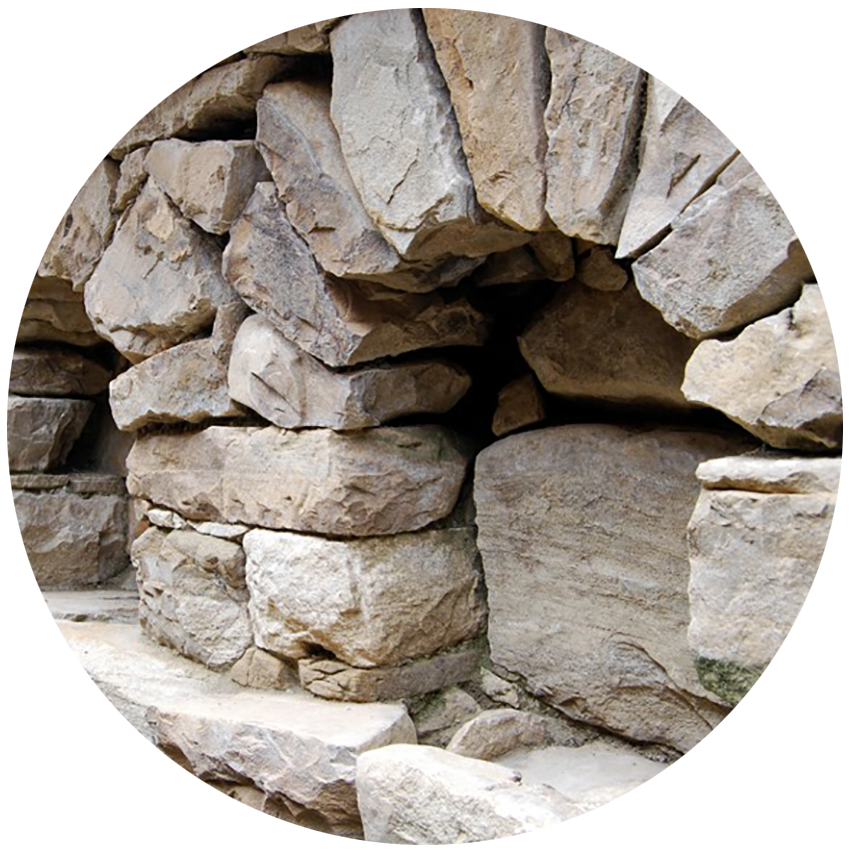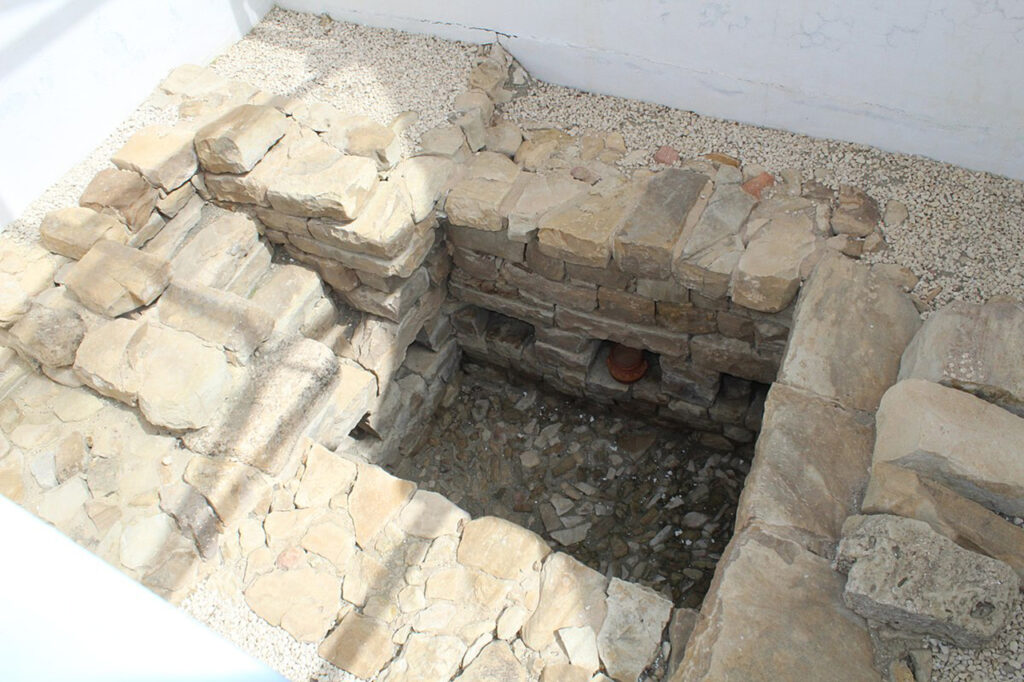
Eastern Necropolis
In May 2012, the intervention was carried out in the eastern necropolis and a funerary enclosure, which was used in Roman and medieval times , was found on the land where the visitor reception center is located. Nearly a hundred Roman tombs have been documented, in pits excavated in the ground and covered with stone slabs. Several hypogeal Roman tombs stand out there, like family mausoleums, which have a series of niches in the walls to house the urns that would include the cremated remains. These monumental tombs would belong to families with a certain purchasing power, who built these monuments at the turn of the era or the 1st century AD, while the individual burials would be dated between the 2nd and 4th centuries AD.
In 2019, during the construction of a new access to the visitor reception center, two burials similar to those already excavated years ago in this necropolis were located, therefore dating back to Roman times.
These were inhumation tombs made using open pits in the ground and covered with stone slabs wedged with rubble, with a northwest-southeast orientation, where the position of the corpses was supine frontal position, with arms crossed over the abdomen and head. head of one of the skeletons (the other lacked one) looking southeast. No remains of the covers were found, possibly missing due to agricultural work and in one of them, corresponding to a young girl of around 16 years old, a necklace or bracelet appeared , made with gold beads, vitreous paste, pearls, resin fossil, carnelian and jet.

Hypogeal tomb of the eastern necropolis.

View of a tomb in the eastern necropolis
The cities of the dead
Roman laws expressly prohibited burials within inhabited areas, which led to the appearance of necropolises or cities of the dead that would be built, mainly, on the sides of the access roads to the city. This custom, which is documented in Torreparedones in at least two areas (the one existing next to the Visitor Center and the one in the North area, not yet excavated) and in all probability was maintained both by having easy communication with the city, and by be placed in a very visible place where anyone could read the epitaphs and remember the deceased beyond death.
The necropolises are, in turn, a reflection of the city of the living since they continue to reflect the social and economic position of the deceased individual, hence, again, why the main tombs were located in the areas of greatest traffic. close to the city. Even so, the distinction between one and the other does not seem to occur in the burial plots where wealthy figures may appear mixed with slaves or freedmen who, on occasions, paid for luxurious funerary monuments to reflect their own social self-representation that had been denied to them in life. However, it does seem that in places where there was more than one necropolis, the elites used to choose one of them to build their tombs. This seems to happen in Torreparedones where there is evidence of more monumental tombs in the North necropolis, although since it has not been excavated it is an extreme that could not yet be fully confirmed.
However, an emergency excavation carried out in 2014 discovered the remains of the chamber of a monumental tomb, dating back to the beginning of the Roman Empire, as well as elements of its funerary trousseau. The chamber was similar to the so-called tomb of the Pompeys, and in it stone blocks from – at least – another older monumental tomb had been reused, in the form of an open aedicula, with relief decoration on the outside, from the late Republican period.
The necropolis of Torreparedones
The size and importance of the ancient city located in the archaeological park of Torreparedones, led to the existence of at least two necropolises from Roman times. The one that can be visited today, next to the Visitor Center, and the one that is documented in the North area, where in 1833 the Pompey mausoleum was discovered by chance.